5 Famous Artists Who Were Migrants and Other Stories
As long as there have been artists, there have been migrant artists. Like anyone else, they’ve left their homeland and traveled abroad for many...
Catriona Miller 18 December 2024
9 January 2021 min Read
The Bedroom(s) are among the most famous paintings of Vincent van Gogh. Why the plural? There are three similar paintings of the same title. All three versions are described in his letters, easily discernible from one another by the pictures on the wall to the right.
The first, in the Van Gogh Museum in Amsterdam, was executed in October 1888, and was a bit damaged during a flood that occurred while the painter was in the hospital in Arles. Almost a year later, Van Gogh made two copies of it: one, the same size, is now in the Art Institute in Chicago; the other, in the Musée d’Orsay, produced for his family in Holland, is smaller. Today we will be talking about all of them.
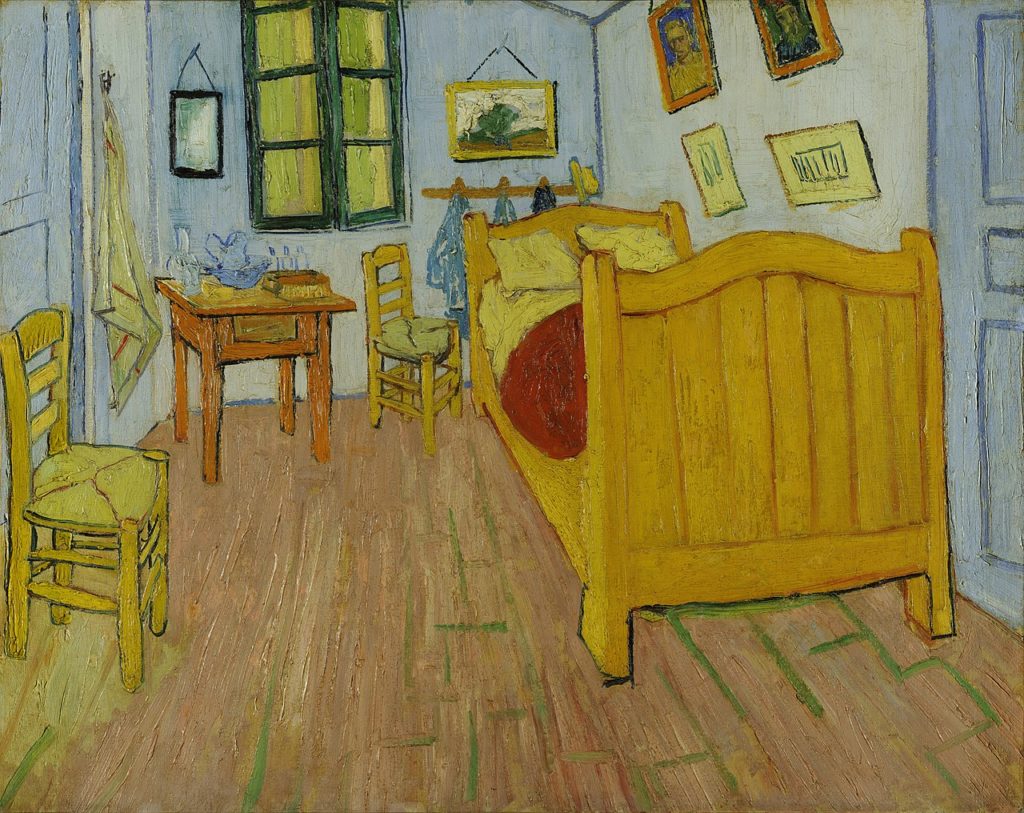
The painting depicts van Gogh’s bedroom at 2, Place Lamartine in Arles, Bouches-du-Rhône, France, known as the Yellow House. The door to the right opened on to the upper floor and the staircase; the door to the left was that of the guest room he held prepared for Gauguin; the window in the front wall looked on to Place Lamartine and its public gardens. This room was not rectangular but trapezoid with an obtuse angle in the left-hand corner of the front wall and an acute angle at the right.
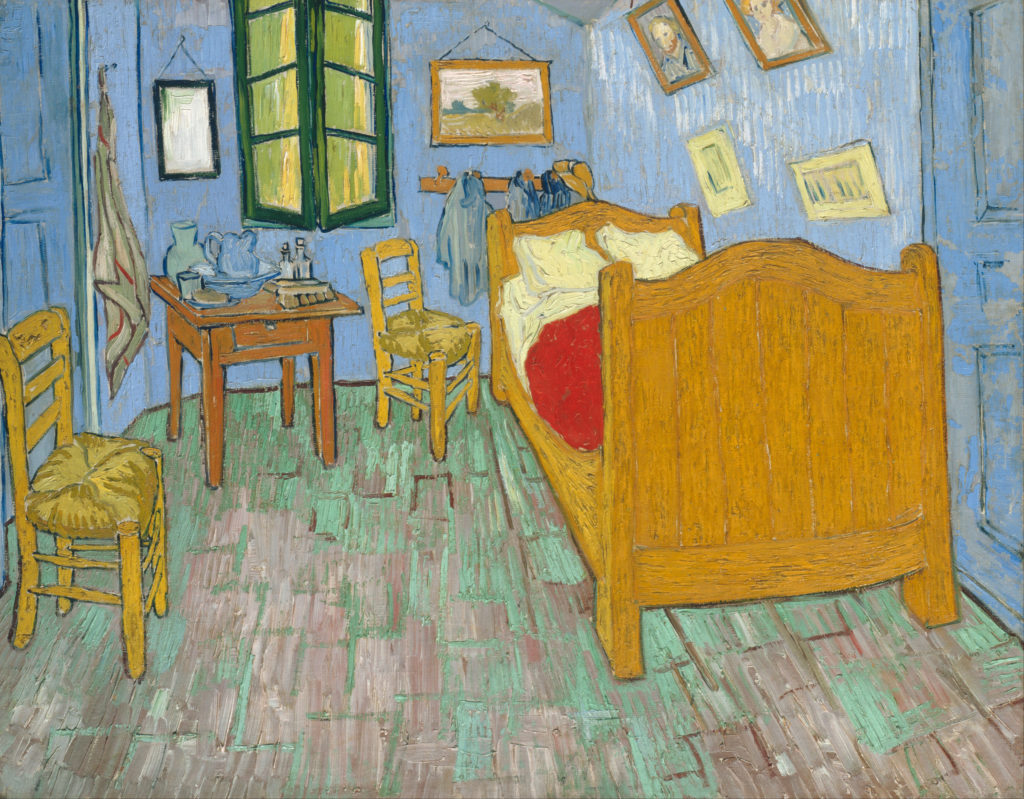
The bedroom was fitted out with simple wooden furniture and van Gogh’s own art on the walls. By use of strong, contrasting colours, the artist sought to express particular emotions: here the pale purple of the tiles, the yellow of the furniture and the light violet of the walls are intended to evoke the rest or sleep that he experienced in his bedroom. What’s interesting is there are always two pillows on Vincent’s bed, which may be a suggestion that the artist did not want to be alone.
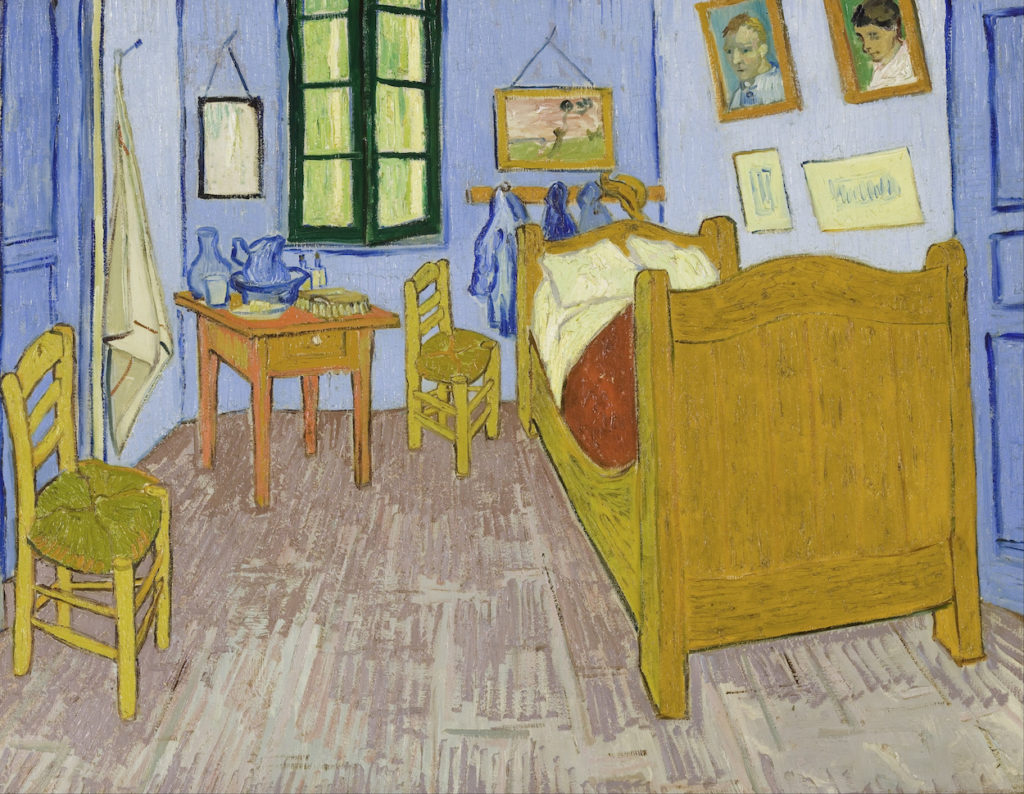
In a letter to his brother Theo, Vincent explained what had provoked him to paint such a picture: he wanted to express the tranquillity, and bring out the simplicity of his bedroom using the symbolism of colours. Thus, he described: “(…) the pale, lilac walls, the uneven, faded red of the floor, the chrome-yellow chairs and bed, the pillows and sheet in very pale lime green, the blood-red blanket, the orange-coloured washstand, the blue washbasin, and the green window”, stating “I wanted to express absolute repose with these different colours”.
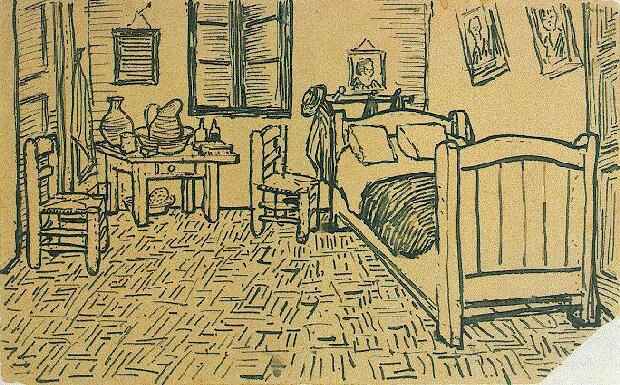
Through these various colours, Van Gogh is referring to Japan, to its crêpe paper and its prints. He explained: “the Japanese lived in very simple interiors, and what great artists have lived in that country” and although in the eyes of the Japanese, a bedroom decorated with paintings and furniture would not really seem very simple, for Vincent it was “an empty bedroom with a wooden bed and two chairs”.
All the same he does achieve a certain sparseness through his composition made up almost entirely of straight lines, and through a rigorous combination of coloured surfaces, which compensate for the instability of the perspective.
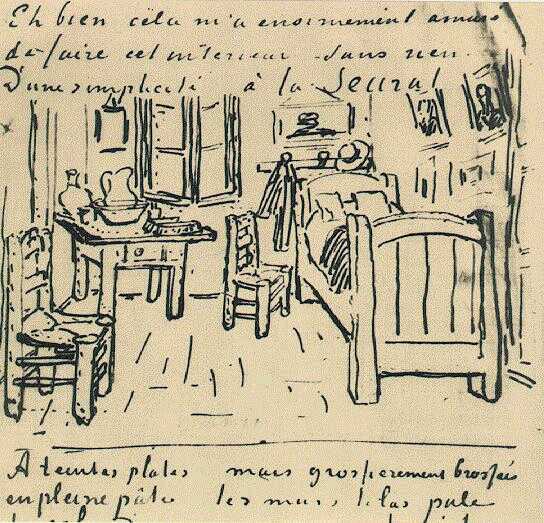
Van Gogh included sketches of the composition in this letter as well as in a letter to Gauguin, written slightly later. In the letter, van Gogh explained that the painting had come out of a sickness that left him bedridden for days. This version has on the wall to the right miniatures of van Gogh’s portraits of his friends Eugène Boch and Paul-Eugène Milliet. The portrait of Eugène Boch is called The Poet and the portrait of Paul Eugène Milliet is called The Lover.
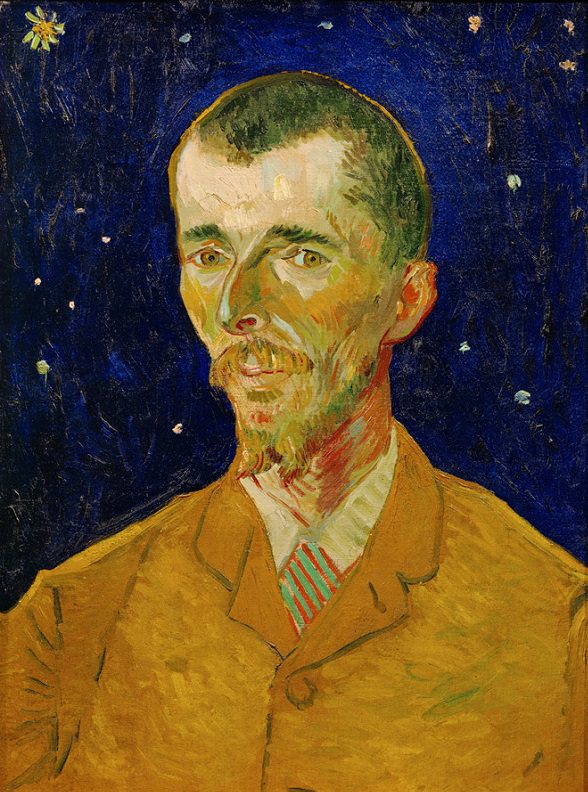
In a letter to his brother, van Gogh said about the portrait of Boch, “I should like to paint the portrait of a fellow artist who dreams great dreams.” The artist was thinking of both love and infinity: “I would like to convey in the picture my appreciation, the love that I have for him. […] Behind his head, instead of painting the ordinary wall of this shabby apartment, I will paint infinity, I will do a simple background of the richest blue, the most intense blue that I can create, and through this simple combination of the bright head against this rich, blue background, I will obtain a mysterious effect, like a star in the depths of an azure sky.”
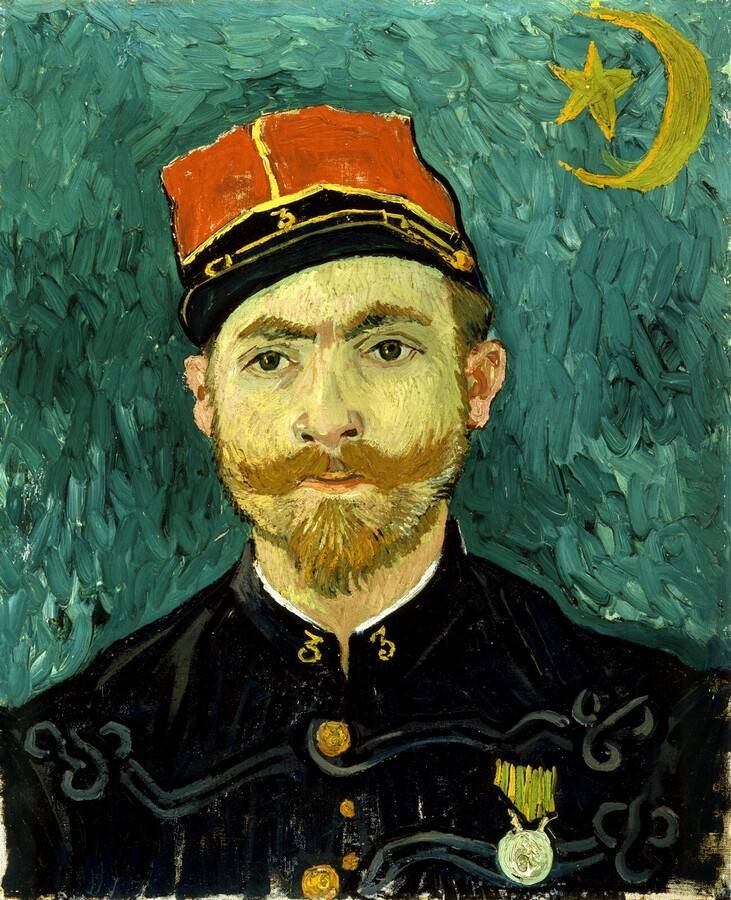
In 1888, Paul-Eugène Milliet became one of van Gogh’s few friends in Arles. He became Vincent’s painting and drinking companion. Milliet was a soldier and had a interest in art, and he even took drawing lessons from van Gogh. At one point, he was entrusted with 36 of van Gogh’s works to carry to Paris and give to van Gogh’s brother, Theo. When he returned, he hauled home Japanese woodcuts for Vincent from Theo. Milliet also appeared to be the epitome of a lover in van Gogh’s eyes. Writing to Theo, van Gogh explained that he wanted to paint Milliet “because he’s good-looking, very jaunty, very easy-going in his appearance, and he’d suit me down to the ground for a painting of lovers.” And van Gogh was always, let’s say – unlucky with women.
In the second and the third version, the portraits are replaced by two different pairs of a self portrait and an imagined women.
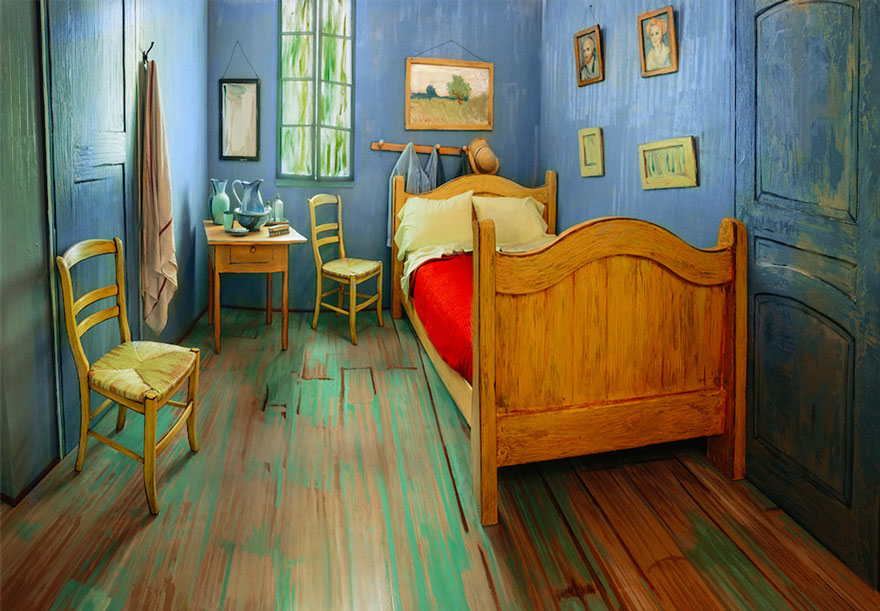
In 2016 The Art Institute of Chicago partnered with Airbnb on a unique campaign. As part of the Art Institute of Chicago’s exhibit, “Van Gogh’s Bedrooms”, a replica has been created of the famous artist’s bedroom featured in his paintings. For $10, members of the public can reserve a night’s stay on the popular home-sharing website Airbnb. There is one exception, however. Van Gogh painted a twin-size bed. The real-life replica contains a full-size bed that can comfortably fit two people.
DailyArt Magazine needs your support. Every contribution, however big or small, is very valuable for our future. Thanks to it, we will be able to sustain and grow the Magazine. Thank you for your help!